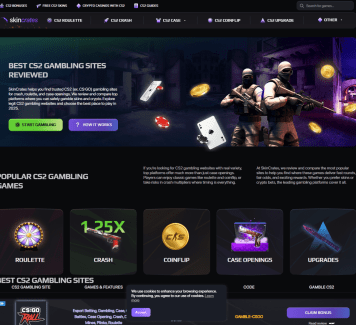
As companies expand globally, employees and partners in different geographical locations need timely content, appropriately localized to company standards and country regulations, for effective internal communications, resource sharing, and access to knowledge. Yet portals and other templated systems can get complicated scalability and personalization fail especially in multi-regional environments. A headless CMS can facilitate the creation and management of a global employee and partner portal through its customizable, modular elements. Since a headless CMS offers everything needed for centralized governance while allowing for regional, departmental and audience-based customization through content separation from design and an API-first delivery method it’s the solution to global onboarding and content needs.
Centralizing Resources While Supporting Regional Needs
A global employee or partner portal will need to utilize a headless CMS in order to balance central governance with local applicability. Employees in Germany will need to access compliance training likely even in their local language while partners in Brazil may need regionally sensitive pricing sheets or marketing materials published in Portuguese. Benefits of headless CMS include enabling this balance by providing a single source of truth at the headquarters level while allowing for localized customization. A headless CMS allows for the organization to have a single source of truth with content created and governed at the headquarters level, while still allowing regional teams to customize final versions based upon language, regulatory needs, or business imperatives. This combination of centralization and customization allows for a consistent message and distribution of documentation, while providing a more scalable experience worldwide.
Delivering Role-Based Content Through Structured Models
Different users need access to different content based upon their roles within the company. Sales needs access to sales decks, support needs access to process documentation, channel partners may need different tools than internal team members, and HR needs its own dedicated content as well. A headless CMS supports role-driven content delivery with content models and dynamic rendering via APIs. For example, the organization can tag content relative to its relevance based upon employee role, region or department, and create custom dashboards that only display relative content. This way employees are not overwhelmed with unnecessary information but rather have useful resources at their fingertips that enable them to do their jobs effectively.
Supporting Multilingual Communication at Scale
Communication is key across any organization; however, for a global organization it needs to be communication in the right language. Yet a headless CMS supports global organizational communication by facilitating multilingual content through linked language variants, localization workflows, and Translation Management Systems. Company communications, training materials, policy updates, onboarding guides all of this can be translated into necessary languages, vetted and approved by subject matter experts in a timely fashion, and disseminated as needed across multiple geographical footprints and languages. This promotes inclusion and functionality by anyone and everyone connected to the organization.
Less Risky Updates with Less Risk
It’s important to keep employee and partner portals refreshed all the time with new training, new compliance policies, new products, etc. Updating these portals inside a CMS that takes a long time to render such changes is risky especially when there are different iterations by region. A headless CMS allows teams to update a single content block or field without ever touching the larger page or larger system. This modularized construction supports iteration, content stability, and time-to-publish even for large enterprises with extensive approval processes.
Easy Integration With Enterprise Platforms
Employee and partner portals don’t exist in a bubble. HR systems, LMS systems, CRMs, analytics, etc. need to talk to this new content portal. Headless CMS platforms were made for integration using APIs to push and pull information from other systems. Whether it’s pulling known consumer information from identity providers or pushing out a new document to document management systems, a headless CMS makes sure information is current, secure, and applicable. Integrations make business easier and foster enhanced digital workplace experiences for employees and customers.
Security and Compliance With Regional Requirements
Enterprises often find themselves in situations where regionally-based data privacy laws and legal requirements must be followed and documented. A headless CMS makes this easier by allowing for governance through controlled approval workflows, content variants by region, and audit trails. For example, disclaimers, legal policies and regional certifications may need to be reviewed by a legal team enterprise-wide but then pushed only to the appropriate portal after review. This centralization reduces risk while facilitating decentralized content compliance where appropriate.
Empowering Dispersed Teams to Manage Their Own Resources
While centralized teams may control global best practices and compliance policies, regional teams should also have the ability to manage what’s on their portals from uploading a new partner case study to changing an events calendar or updating local contact information. A headless CMS can empower such opportunities with user roles and permissions to dictate who can control what content types. This democratized access increases local responsiveness and buy-in while ensuring branding and security standards are upheld across the enterprise.
Creating a Seamless Experience No Matter Device or Channel Used
Employees and partners use portals on various devices and channels from desktop screens to tablets, mobile devices and intranet kiosks. A headless CMS makes content device agnostic and treated equally across front-end presentation as it decouples content from the delivery layer. A headless CMS serves up content via APIs to any external environment to make customized and responsive portals that work regardless of the touch point. When people can access your portal from anywhere without compromising their experience, adoption and engagement rates soar across the international employee and partner population.
Measuring Engagement Data to Enhance Portal Use
To understand how employees and partners engage with portal content, consistent measuring is required. Headless CMS platforms easily integrate with measurement platforms to monitor engagement statistics like downloads, views, page time and completion rates. Being able to see what’s valuable, what’s not, where the gaps are and how people use your portal helps businesses serve their constituents better over time. Automated feedback loops will allow content teams to iterate on design and messaging so that the portal remains effective, easy to use, and purposeful.
Streamlining Onboarding for Global Employees and Partners
Onboarding is one of the crucial times for employees and partners. Access to the proper collateral at the right time can improve time-to-productivity and long-term engagement potential. A headless CMS makes it easier to create and distribute onboarding collateral from a central location which can ultimately be customized based on roles, regions or languages. This ensures new employees and partners receive relevant, branded and up-to-date information no matter where they sit or what department they’re in.
Supporting Real Time Communication for a Global Workforce
Whether it’s a new policy, a product release or something critical to security that needs to be communicated, the ability to reach all employees even those internationally at once in real time is crucial. A headless CMS allows content teams to push updates live from one central location to all instances and devices everywhere. Managing time-sensitive communications from a single source encourages speed, accuracy and uniformity even with the most geographically dispersed internal teams and partner networks.
Avoiding Content Redundancies with One Source of Truth for All Content
Content redundancies and outdated content are significant challenges for many enterprises that have multiple portals. However, with a headless CMS that can support multiple tenants (a.k.a. multiple portals or experiences) connected to one source, the concern is eliminated. Major documents can be swapped out and reused and edited on a global level, for example, branding assets and commonly used training materials; regional teams still have override permissions as well as supplemental sources to edit where appropriate. Uniformity is critical for accuracy and operational effectiveness across the enterprise network.
Future-Proofing the Enterprise Portal for New Regional or Business Developments
Enterprise needs change as businesses grow, merge, rebrand and restructure. A headless CMS is a fluid approach for rapid scaling, adding new tenants for new regions and lines of business, providing tenants/integrations for future AI personalization technology or voice-command portals. The decoupled architecture makes the CMS scalable independent of operations; it can change and expand with business needs and strategies to keep internal and external partner engagement sustainable, adaptable and future-ready.
Conclusion: Scaling Internal and Partner Engagement with Headless CMS
Yet as companies grow externally across markets and augment their enterprise partner networks, the level of complexity increases exponentially. Internal communication and enablement become more complicated as teams work more separated and partners possess varied regulatory requirements and content needs across cultural, linguistic and operational nuances. To sustain successful velocity, enterprises need an infrastructure that is scalable, flexible and persistent to keep pace with the speed and accuracy of global content needs. This is where a headless CMS technology comes into play.
Whereas a traditional CMS can fail at regionalized customization or appropriate content reuse, a headless CMS decouples content from experience. This type of architecture enables a centralized content creation and management to dynamically deliver constructed pieces across regionalized portals, thereby where specific user roles, languages and applications drive access. Thus, whether a human resources leader in Tokyo is onboarding new employees or a regional sales partner in Brazil requires updated product information, a headless CMS can ensure they receive reliable, role-based access content driven by broader brand needs but attuned to local market requirements.
Furthermore, the very nature of headless CMSs support cross-platform content distribution to accommodate dozens of languages at once. Content can be fielded across different types, language variants linked to translation integrations where localization teams enjoy enhanced capabilities without compromising quality. Furthermore, role-based personalization ensures that internal staff’s exposure to sensitive internal documents differs from what third-party resellers or field service representatives see; therefore, content governance improves as sensitivity for material is determined and there are reduced opportunities for these materials to be shared internally through other means.
Integration is key, too. A headless CMS integrates seamlessly with enterprise applications HRIS, CRM technologies and learning management systems (LMS), document repositories, project management software and utilization dashboards. When a headless CMS integrates within a larger technological ecosystem, it fosters a holistic content strategy with intelligent flow between technologies, reducing redundancies and increasing data integrity and operational utility. Legal can authenticate compliance language in approval workflows while IT governs identity systems allowing for access; regional content managers can localize approved collateral without jeopardizing global consistency.
In a digitally transformed workplace rife with non-negotiated expectations of velocity, transparency and personalization from remote workers and partners alike, these capabilities are no longer preferred; they are expected….expected to maintain alignment across teams, partner access efforts and rapid change while controlling for messaging and experience.
These platforms supply the needed infrastructure to globally scale success while resilient high-performing portals are built to sustain change as enterprise ideas flourish.
Therefore, investing in a headless CMS architecture is not for the content management experience but for the experience of sustained engagement, productivity and alignment for the foreseeable future across every inch of an enterprise footprint. For those companies still trying to figure out how they’re going to resolve global challenges of expansion through digital transformation, this is the pending architectural advantage to creating unified, agile and trusted communication at scale.













